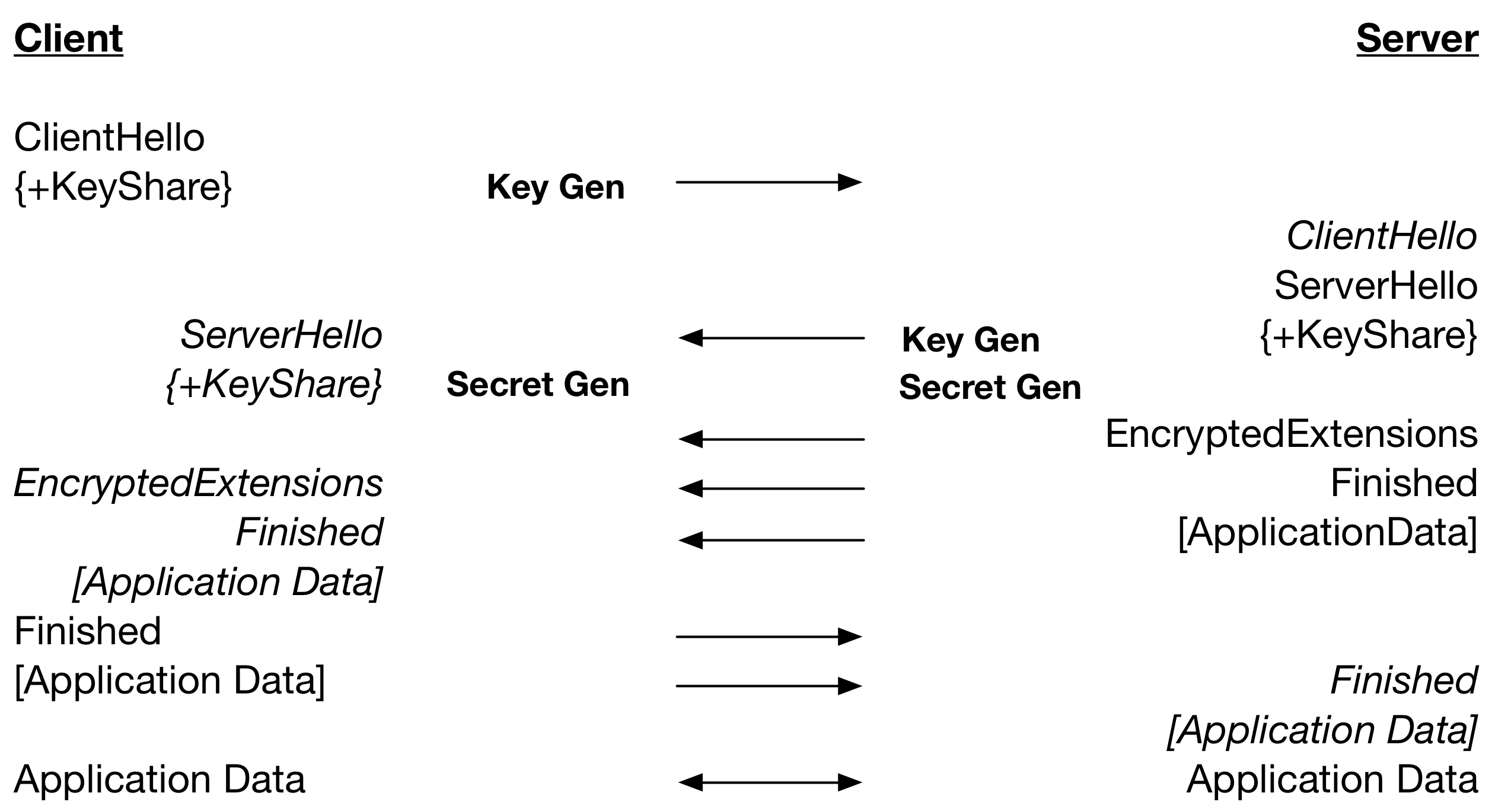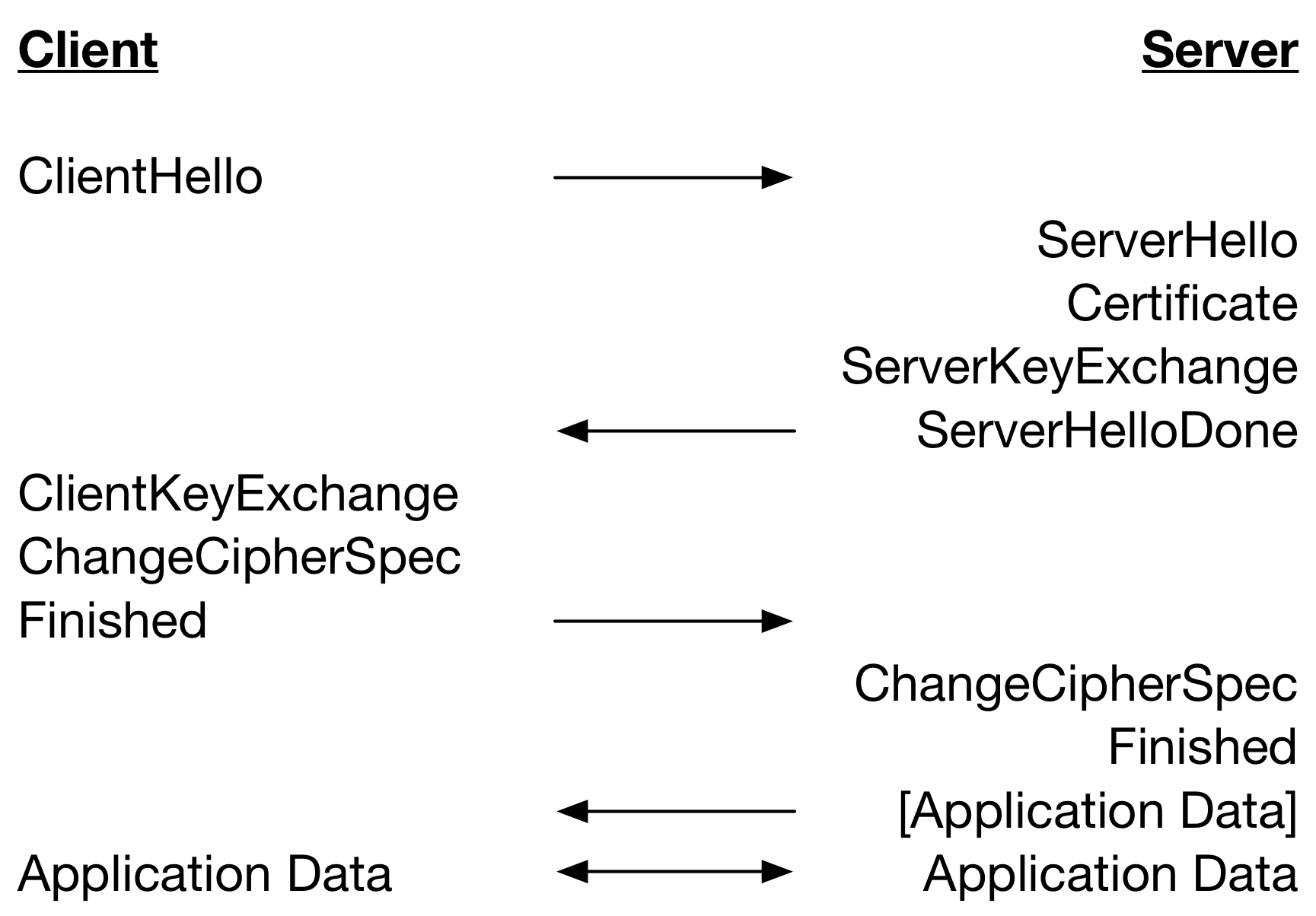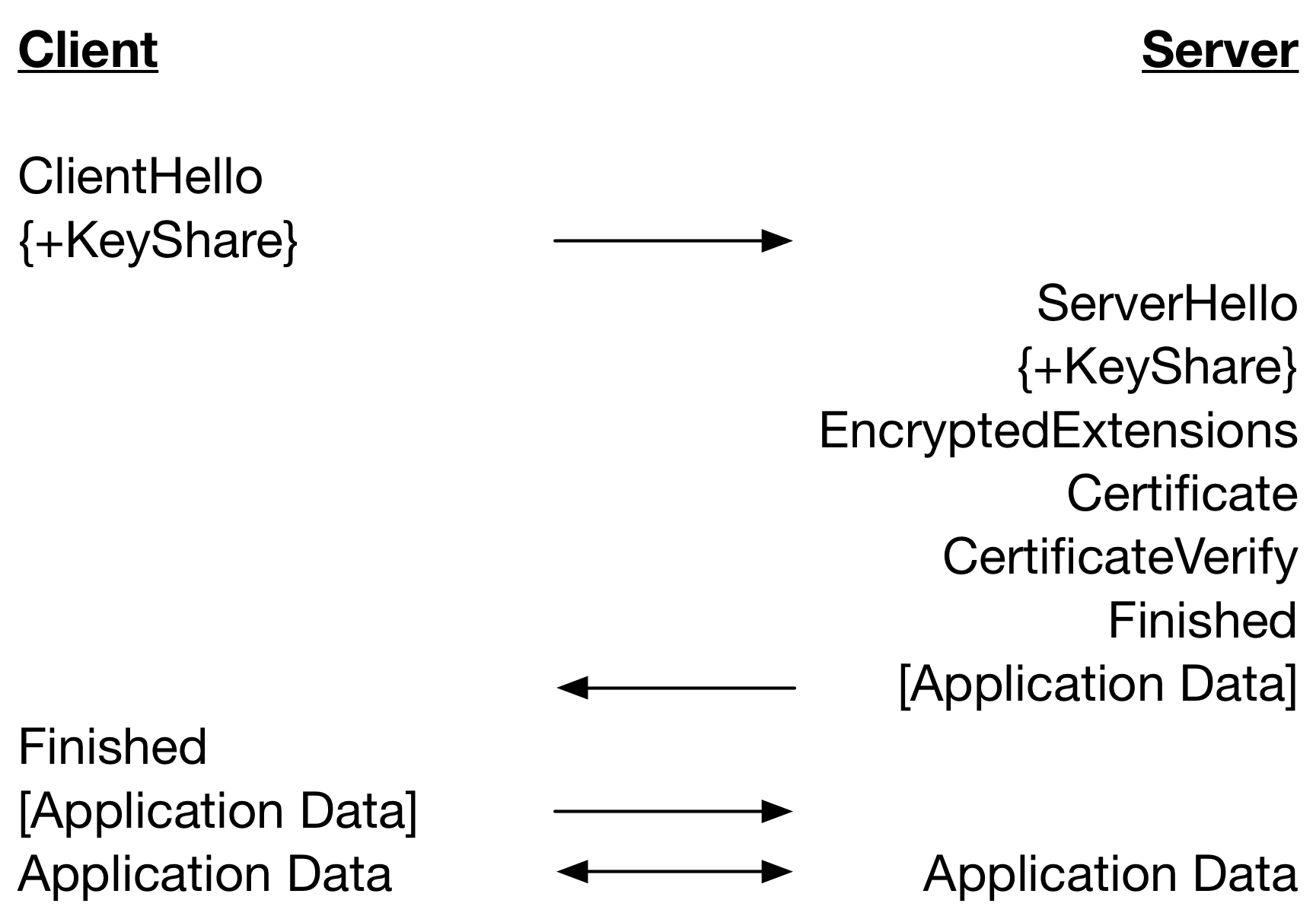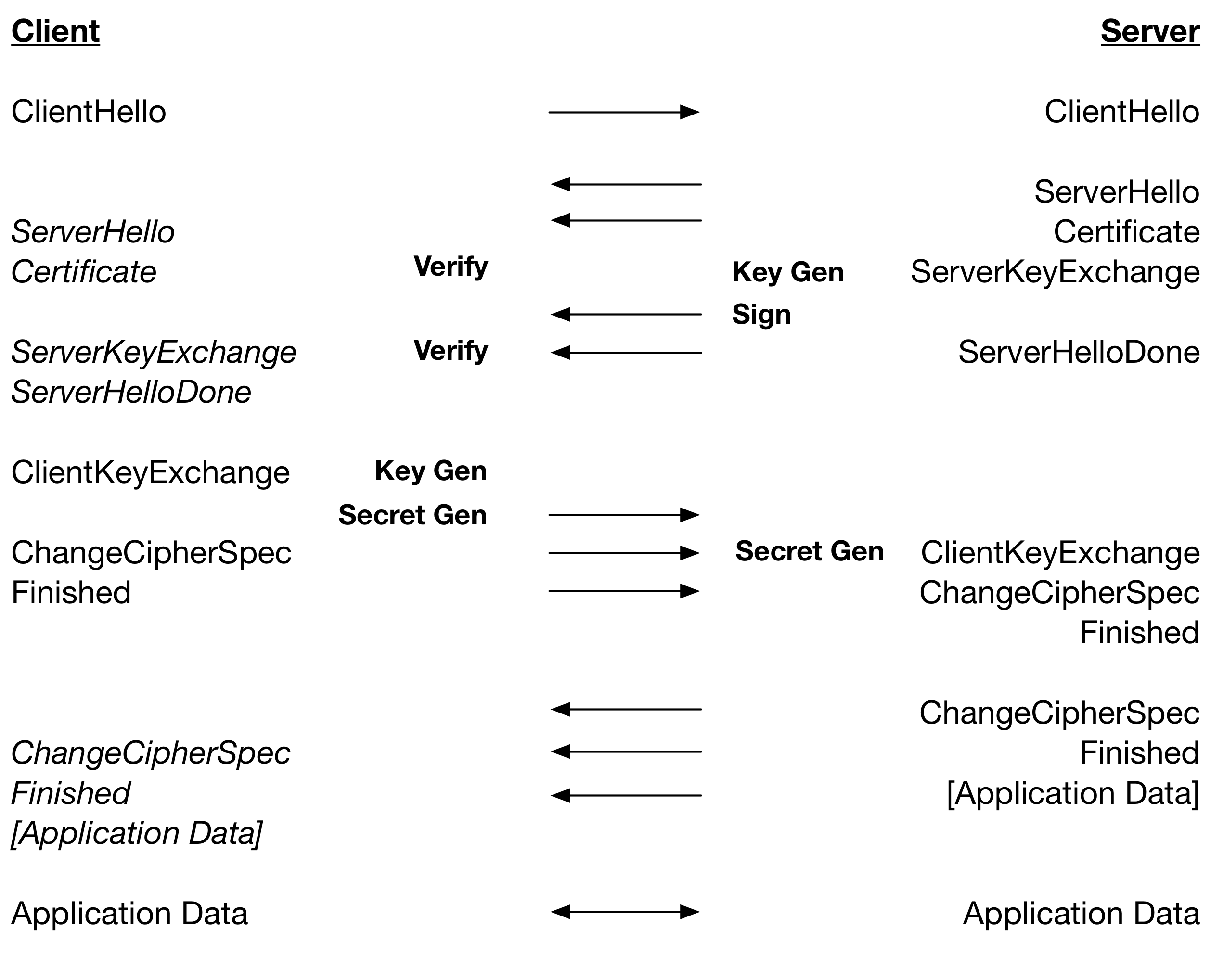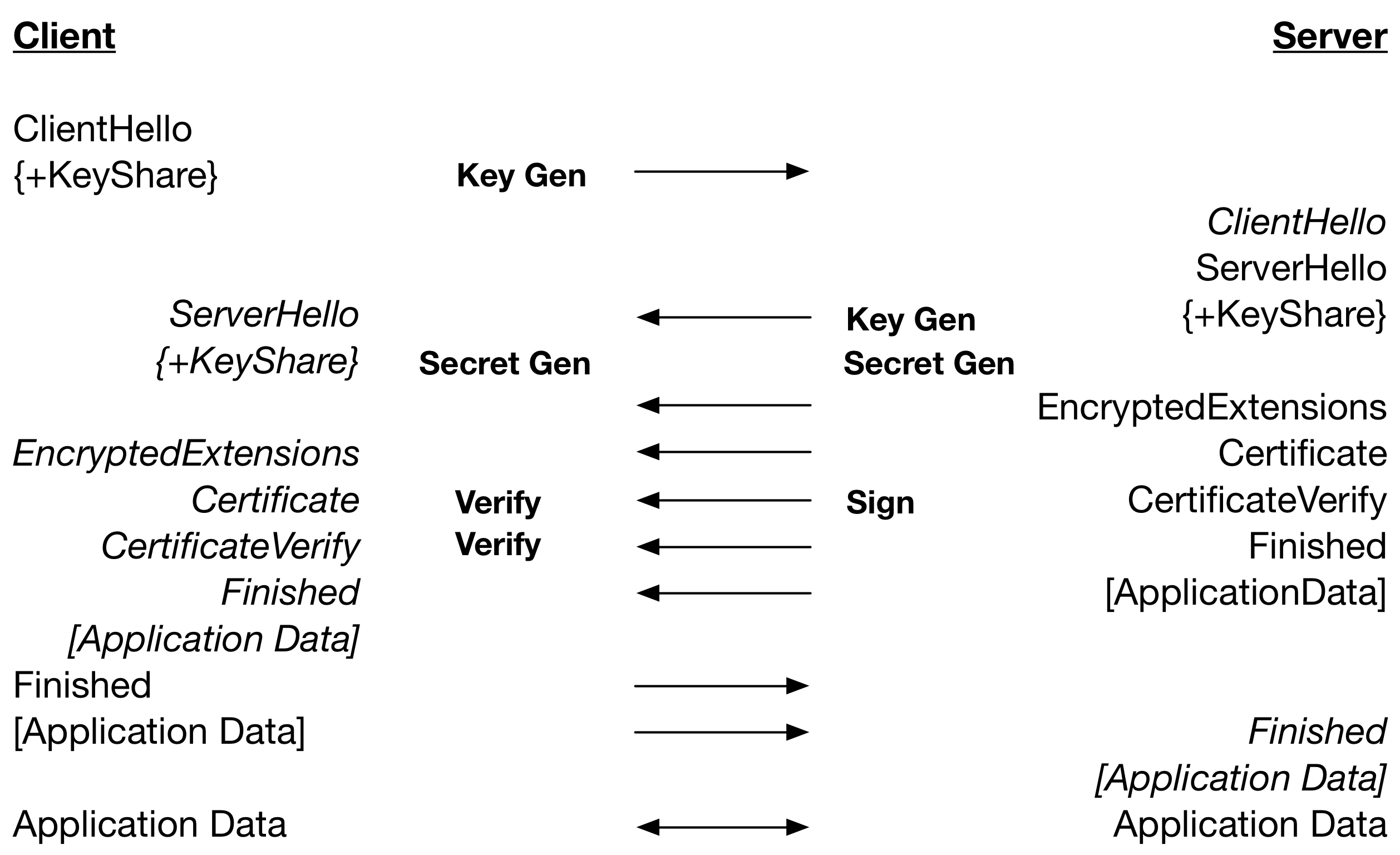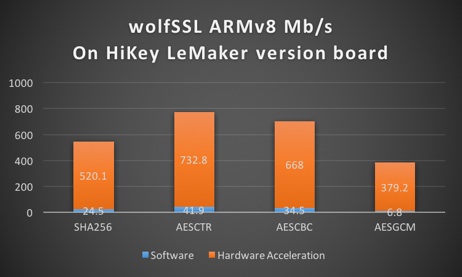TLS 1.3 has some significant changes from TLS 1.2 in the ordering of handshake messages and this impacts performance. This is the fifth part of six blogs discussing the performance differences observed between TLS 1.2 and TLS 1.3 in wolfSSL and how to make the most of them in your applications. This blog discusses how the changes to certificate based client-server authentication in TLS 1.3 adversely affects performance.
Let’s start with a look at the TLS 1.2 full handshake performing client-server authentication with certificates below.
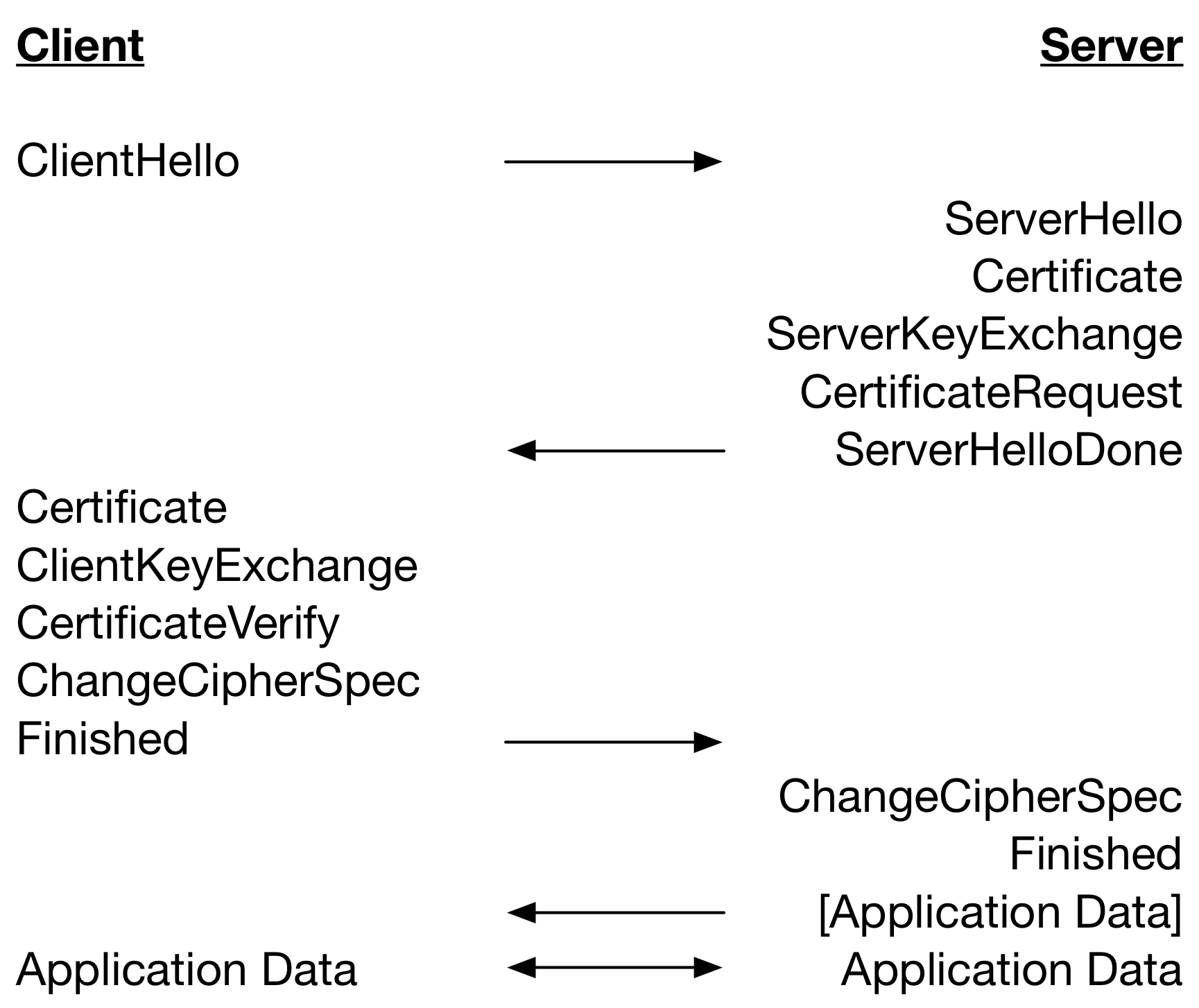
A TLS 1.3 full handshake (without HelloRetryRequest) performing client and server authentication with certificates is given below.
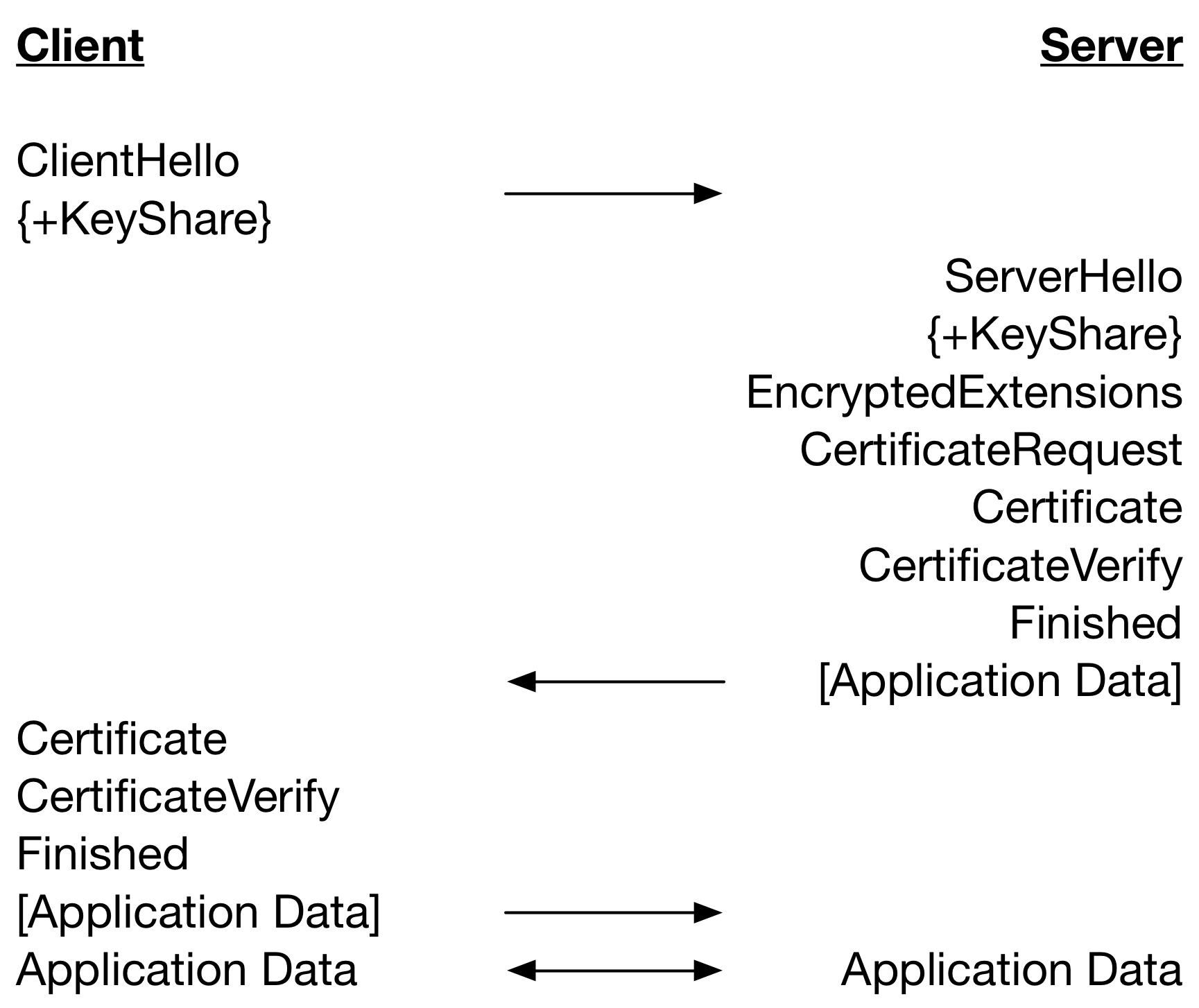
Notice that there is one less round trip until Application Data can be sent in TLS 1.3 as compared to TLS 1.2. This improves performance on high latency networks but there is a downside. What is clear in the diagram is when messages are sent but not how and when handshake messages are processed.
The table below restates the TLS 1.2 handshake, but includes the processing of messages and the major cryptographic operations that are performed. Operations are on the same line if the operations are performed at the same time relative to network latency.
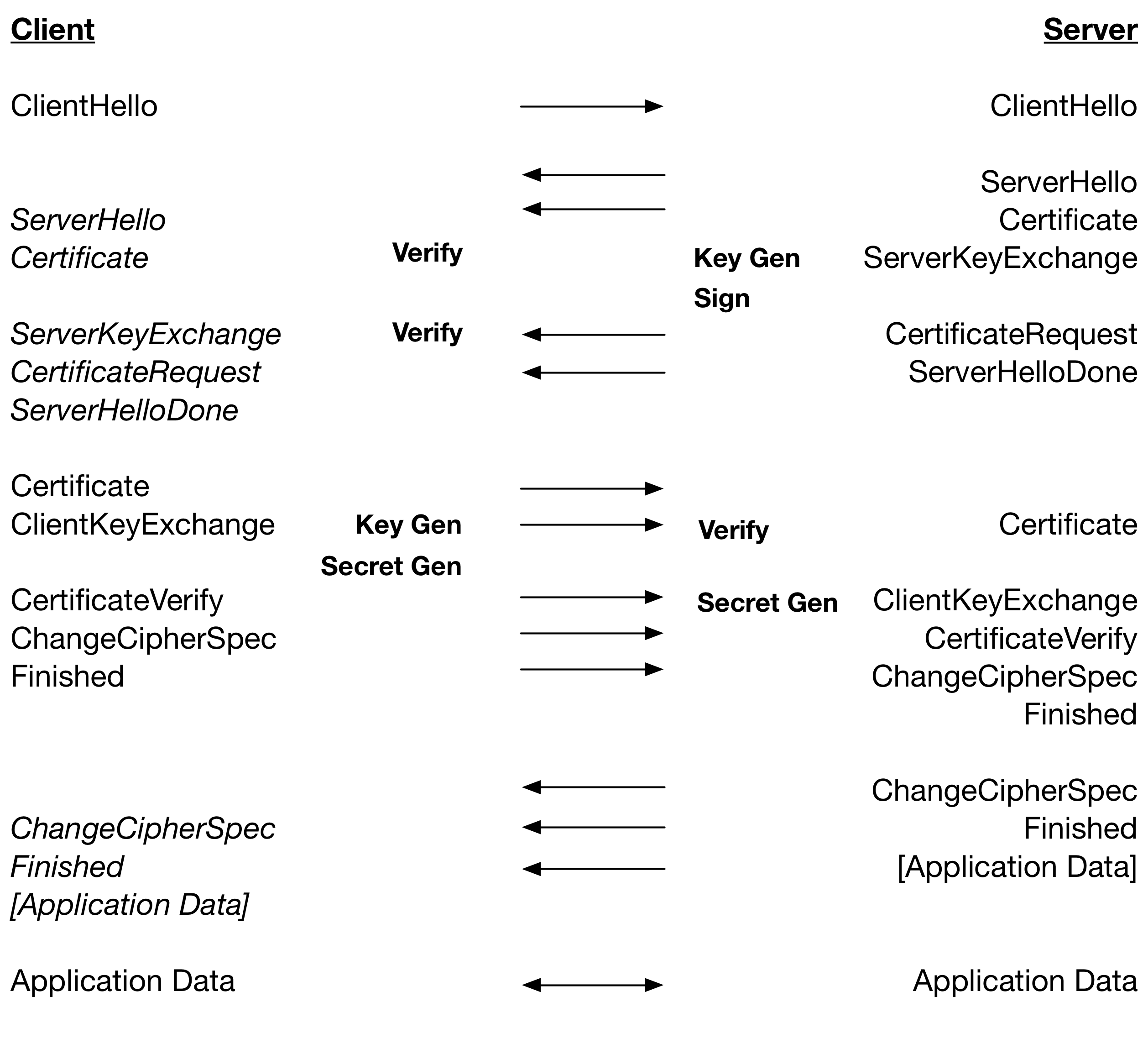
The server produces a KeyShare, sends the ServerHello, and then quickly sends the EncryptedExtensions, CertificateRequest and Certificate messages. The CertificateVerify takes a while to produce and the Finished message is quick. The client takes a while to process the KeyShare, quickly process the EncryptedExtensions and CertificateRequest messages, and spends a long time performing certificate chain verification. The CertificateVerify will typically arrive during the chain verification and then the client processes the rest of the messages synchronously. As a result, there is little overlap.
From this we can see that for RSA where Verify is very fast relative to Sign, a TLS 1.2 handshake is dependent on: 2 x Key Gen, 2 x Secret Gen, 1 x Sign and 2 x Verify. For ECDSA, where Verify is slower than Key Gen plus Sign: 1 x Secret Gen and 3 x Verify.
The table below restates the TLS 1.3 handshake, including processing of message and the major cryptographic operations.
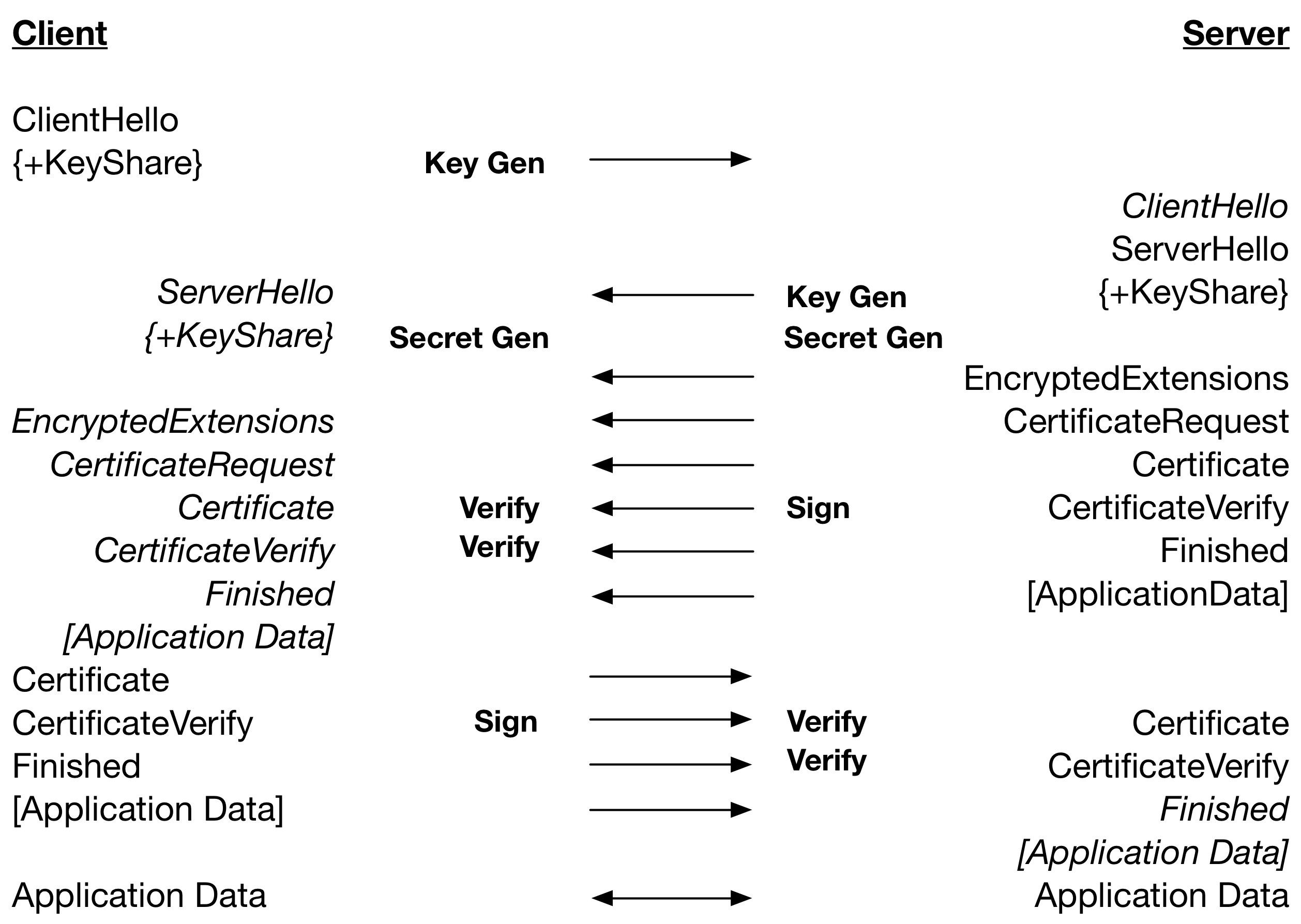
From this we can see that a TLS 1.3 handshake using RSA certificates is dependent on: 2 x Key Gen, 1 x Sercret Gen, 2 x Sign. Therefore a Secret Gen and 2 x Verify in TLS 1.2 are replaced with a Sign. Using ECDSA a handshake is dependent on: 2 x Key Gen, 1 x Sercret Gen and 4 x Verify. Therefore, a Secret Gen and Sign in TLS 1.2 is replaced by 2 x Verify.
This means that for low latency networks TLS 1.3 can be slightly slower or about as fast as TLS 1.2. The only practical mitigation for ECC certificates is to minimize the amount of work performed in chain verification. Having the server certificate stored on the client and/or the client certificate stored on the server will improve TLS 1.3 performance but at the risk of lower security.
The next blog will be the final one in this series and will discuss difference in throughput between TLS 1.2 and 1.3.
Part 1 (TLS 1.3 Performance – Resumption)
Part 2 (TLS 1.3 Performance – Full Handshake)
Part 3 (TLS 1.3 Performance – Pre-Shared Key (PSK))
Part 4 (TLS 1.3 Performance – Server Pre-Generation)


